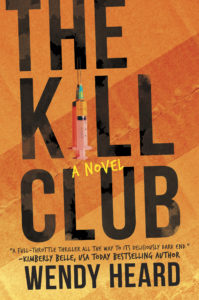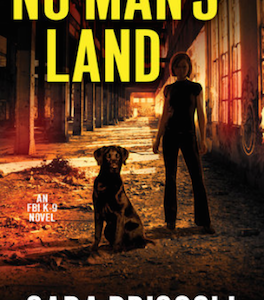A psychologist gave me the following tip for calming anxiety: “Go on a roller coaster or watch a scary movie. This puts your body through the stress cycle, but it completes the cycle. That’s what anxiety is, really: a stress cycle that hasn’t had a resolution.”
So let’s talk about why people read thrillers, what promises we make to a reader by writing them, and how we can deliver a satisfying end to a reader’s stress cycle.
When you get on a rollercoaster, you’re looking forward to a few things: that it will go fast, that it will surprise you. You hope it will have hills and valleys. Some might hope for upside-down loops and huge drops; for others, that might make them nauseous.
For those writing thrillers, I encourage you to consider what kind of roller coaster your book is. Is it a Disneyland-level ride, or is it a drop-filled, terror extravaganza? Neither is wrong. Some of us don’t have the stomach to go upside down; some of us live for the zero gravity. Just know, when a reader picks up a book labeled “thriller,” they are ready to go on a ride. Here, we’re going to look at Act 2 and talk about how we can make sure they get to finish out that stress cycle.
* * *
Let’s look at the second act in two equal parts. The first, 2A, is the climb. In 2A, you can’t see the road beyond the pinnacle you know you’re approaching. In fact, you can’t even see the pinnacle itself. You hear the tracks creaking; you see the ground getting farther away. Your stomach knots in anticipation.
The pinnacle is the midpoint. The ride pauses here. You look at the tracks ahead for the first time and realize the ride is scarier and bumpier than you realized. You kind of want to get off. Your heart is pounding.
And then you drop.
**everyone screams**
Without this moment, it’s not a roller coaster; it’s a ride. Rides for young children do not have this midpoint experience, and there’s a reason for that. It can be scary as hell. That said, if you’re writing a middle grade or young adult thriller, those kids are more than ready to be scared. Have you seen a seventh grader on a roller coaster?
In the first act, we’ve given our readers a good before snapshot. We’ve shown them why the status quo can’t continue, why this is a broken world and our hero must fix it. We’ve shown them the problem, the inciting event, and now it’s time to get into the action.
Act 2A is all about taking the reader on a ride that climbs upward toward a midpoint that you, but not the reader, can see. Along the way, there will be mini-drops, valleys, and scares, and at each of these points you’re inserting what Hollywood would call “loaded guns.” These are plot points that will come back later and explode in your hero’s, or other characters’, faces.
When we get to the midpoint, or the pinnacle of the roller coaster, we pause, and a reader should experience something akin to, “Holy sh*t, this changes everything.” It’s only at the midpoint that the reader should truly understand the full stakes of the story. You’ve given them the general, overarching stakes in the first act, but at the midpoint, they should be confronted with a new reality that is even scarier and more thrilling than the reality they thought they were living in.
And then the sh*t hits the fan.
It’s fast, it’s intense, it’s emotional, it’s all the hero’s personality failings exploding in their face; it’s those loaded guns going off one by one…Act 2B should feel like your hero is running from a foe that will probably catch and kill them. It should feel like your hero is in serious danger of failing, like your car might actually fall off the track, like each corner and loop could the end. It’s fast, it’s intense, it’s emotional, it’s all the hero’s personality failings exploding in their face; it’s those loaded guns going off one by one; it’s all the things you’ve been leading up to happening in quick succession.
Until the end of Act 2B, when, after all that, your hero loses, and the enemy wins.
Or do they?
Because what comes next is the final fight for your hero’s life, but that’s a topic for another essay.
* * *
I’m going to go through these plot points using an example from film. The example I have chosen is Ghostbusters, because we all know how it ends, so spoilers don’t matter, and because I think it’s fun to consider that the most popular fast-paced movies use thriller beats even though they aren’t billed as thrillers. Why? Because thriller beats can be applied to any genre. That’s right. Any genre can be a thriller. Other examples of thrillers you may not have considered to be thrillers: All of the modern Disney and Pixar movies (Coco is the best thriller ever written; come at me), ET, Game of Thrones, Lord of the Rings, Harry Potter, The Hunger Games, and, like, any other movie or book that has life-or-death stakes and uses this type of plotting. I think “thriller” is more about how you feel while reading/watching rather than what exact genre the piece falls into. Does it stress you out, have you holding your breath, make you afraid for the fate of the main characters? Does it leave you feeling like you ran a marathon, like you went on a roller coaster? Then it used this thriller plotting I’m describing.
So, looking at Ghostbusters, here is Act 2A:
The Ghostbusters get evicted from the university and have to find their own space. They start their business, catch their first ghosts, get their uniforms, their secretary, and develop a fan base.
- Loaded guns (things that will come back and blow up later):
- The guy from the EPA
- The storage facility they build
- “Don’t cross the streams!”
- The increase in paranormal activity
- Ectoplasm (This won’t come back fully till Ghostbusters 2, very nice plotting, guys)
Sigourney Weaver and her apartment building’s paranormal activity:
- Loaded guns:
- The idea that a building can be a hotbed for paranormal activity and that Sigourney Weaver, for whatever reason, is a ghost magnet. (Again, comes back in a huge way in GB2, nice)
- The thing in the fridge that will ultimately end up being Zuul. Eggs frying on the counter! Amazing.
- Her relationship with Peter which will draw him into this action
- Her neighbor Rick Moranis, who will end up being the key master
- The cool ass dog/gargoyles shown a million times before they come to life. Doggoyles.
Midpoint: Sigourney Weaver is possessed by Zuul! Peter meets her and finds her levitating. This changes everything; they didn’t realize someone could be possessed like this, and Peter must save her using what he’s learned so far.
Act 2B: Every plot point is a gun from 2A going off:
- The guy from the EPA shuts down the storage grid, releasing all the ghosts back out into the world.
- Rick Moranis gets possessed by the doggoyles
- Rick Moranis searches the city for Weaver, gets caught by the Ghostbusters, and then gets reunited with her.
- Zuul’s plans come to fruition, and she gets that rooftop disco cross-dimensional party going for real.
By the end of 2B, the ghosts are loose in the streets. The ghostbusters have only their proton packs, no storage grid. The EPA has won. Zuul is going hard with her destroying-New York disco inferno. Sigourney Weaver has fallen in possessed love with Rick Moranis, and they’ve become the doggoyles at Zuul’s side. Zuul has an amazing evil disco jumpsuit and a badass new wave haircut. Cats and dogs, living together. It’s the end of the world. Peter will never have sex with Sigourney Weaver, not now that she’s a doggoyle. So tragic, and also, thank God, because that should never, ever have been a thing.
In Act 3, more loaded guns will go off, but they’ll all be resolved, and all plot threads will tie up neatly, and unfortunately, Peter will chip the dog stone off his way-too-hot-for-him love interest and kiss her now that she’s no longer, you know, a dog. Most of all, the biggest loaded gun of all, and the one that will ultimately save New York: They’ll have to…dun dun dun….cross the streams!
You can find the full beat sheet for Ghostbusters here.
Now go forth and scare the crap out of people. I dare and encourage you.


















